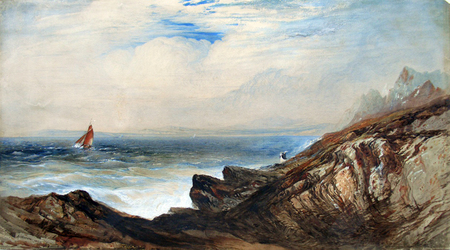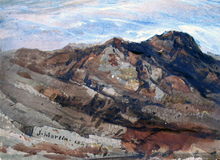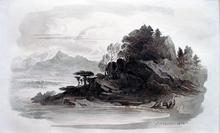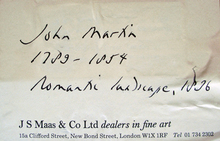The Robert H. Taylor Collection includes eighteen drawers holding 112 prints, drawings, and watercolors. These works were placed on deposit at the Princeton University Library in 1972 and received as a bequest in 1985. Thanks to Mark R. Farrell, curator of the Robert H. Taylor Collection, for his help with this post.
The collection includes two works by the British artist John Martin, who was fifty-eight when he completed the watercolor shown here. At this time in his life, Martin split his focus between art and ecology. He founded the Metropolitan Sewage Manure Company in 1845 to manage the human waste flowing into the Thames and redirect it to agricultural use. Martin completed a number of small watercolors during this period rather than the mammoth oil paintings for which he was (and is) best known.
The collector Robert Taylor loved the British writers of the 19th century. It is somewhat surprising then to find an artist in his collection who was disliked by so many contemporary writers. William Thackeray called Martin’s work “huge, queer and tawdry to our eyes, but very much admired by the public.” The poet Samuel Taylor Coleridge wrote that Martin was “a poor creature” and exchanged nasty remarks about him in letters to Wordsworth. John Ruskin described Martin’s work as “mere manufacture, as much makeable to order as a tea-tray or a coal-scuttle.”
An exhibition of Martin’s paintings has just closed at Tate Britain, where his work faced the same mixed reaction as in the 19th century. “Hugely popular in his time,” notes the Tate press release, “Martin was derided by the Victorian Art establishment as a ‘people’s painter’, for although he excited mass audiences with his astounding scenes of judgement and damnation, to critics it was distasteful. In a sense ahead of this time, his paintings - full of rugged landscapes and grandiose theatrical spectacle - have an enduring influence on today’s cinematic and digital fantasy landscapes.”




